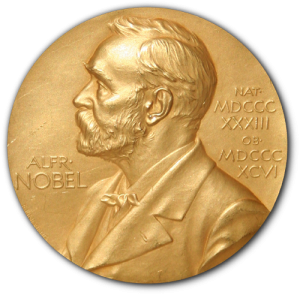 It’s been a busy week for the Nobel Committee. All that phoning around, letting people know that they’ve won the most prestigious prize in science.
It’s been a busy week for the Nobel Committee. All that phoning around, letting people know that they’ve won the most prestigious prize in science.
On Monday, developmental biologists John Gurdon and Shinya Yamanaka received their respective calls from the “Physiology or Medicine” committee for their pioneering work on cellular reprogramming. And if you’re wondering how it feels to win such a prize, Yamanaka is reported to have responded to the announcement by stating:
“I don’t know how I am going to celebrate yet. I think I just need a beer.”
It will be well deserved. But what exactly was it for?
The Nobel Assembly has officially awarded the prize “for the discovery that mature cells can be reprogrammed to become pluripotent”, singling out two seminal studies from the recipients that span some 40 years of research, but retrospectively form an elegant developmental circle .
Gurdon’s work was published in 1962 and overturned the prevailing view of the time that specialised cells were immutable, fixed in their particular task. By removing the nucleus of a mature cell from the intestine of a frog and swapping it with the nucleus of an egg cell, Gurdon was able to demonstrate that all cell nuclei contained the necessary information to build an entire organism, when these initial egg cells subsequently matured into fully adult frogs.
In essence this work demonstrated that, far from being specialised satchels of information, cell nuclei were more akin to Mary Poppins-like bottomless carpetbags, filled with all the genomic instructions from which to build an organism from scratch.
At the time this work was published in 1962, Yamanaka’s research could be seen as something less than embryonic, as he was born that very same year. His findings complemented beautifully those of Gurdon’s frog cell work by discovering the genetic switches that needed to be turned on to reverse this developmental process, and change fully mature specialised cells into blank slates – the pluripotent stem cells.
As such, this year’s prize follows – or develops – nicely from those awarded only a few years ago to Martin Evans, Mario R. Capecchi and Oliver Smithies “for their discoveries of principles for introducing specific gene modifications in mice by the use of embryonic stem cells”, succinctly illustrated in a summary diagram produced by the Nobel Assembly.
Nobel’s do not come easy, and each recipient rightly has a powerful scientific pedigree. Among the many papers that paved the way to the prize, the BMC-series is delighted to have been able to publish some of Shinya Yamanaka’s articles contemporaneously with this prize-winning work. Two articles published in BMC Developmental Biology tackle similar ground by characterising embryonic stem cell-specific genes and the regulation of pluripotency, with the latter being published just days before their seminal paper was accepted in the journal Cell.
Indeed, it is gratifying to see Nobel-prize winning support for open access publishers, however brief, with another handful of papers published by the same group in PLoS ONE a few years later.
For all the fantastic potential that stem cell research harbours for medical applications the field is often seen as controversial, so it is heartening to see such bold backing for this work by the Nobel academy in recent years. Sadly, negative discourse has largely been fuelled by politics rather than science, and it hasn’t escaped the notice of some that the announcement of this prize coincided with almost comic timing with that of U.S. congressman and member of the House Science Committee Paul Broun announcing that such work was “lies, straight from the pit of hell”.
In such a sensitive climate, we feel that publishing openly is crucial.
If the work highlighted in this year’s prize can go some small way to an improved and reasoned debate surrounding the huge potential that exists for medical improvement from this research, then the academy will have chosen well. And if Shinya Yamanaka and John Gurdon happen to be reading this blog, the BMC-series will be delighted to buy them that beer.
[…] was a busy month for the BMC-series, with the announcement of the Nobel prize winners in Physiology or Medicine, and the highly anticipated Open Access week. To hear more about what […]